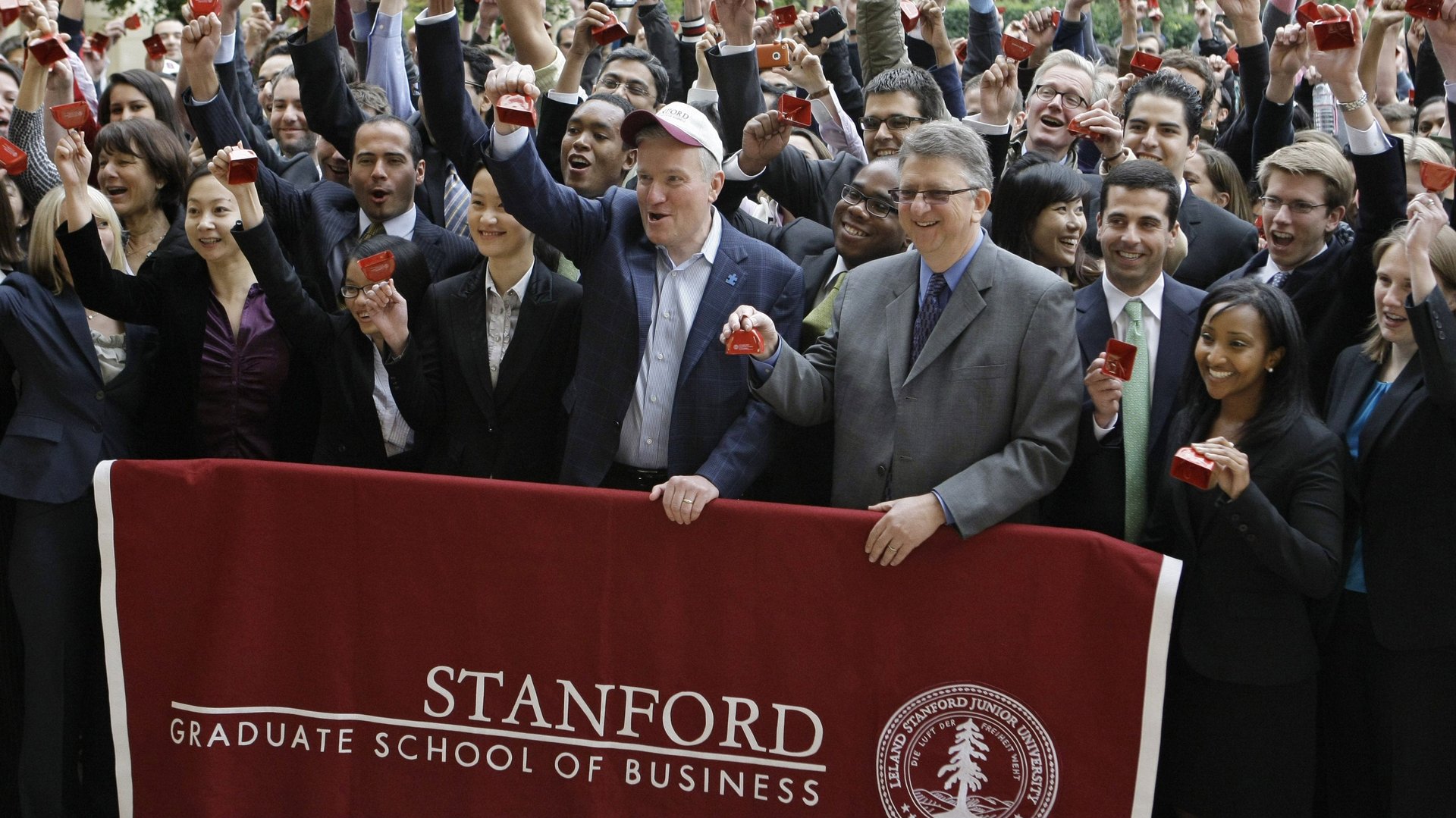Stanford MBAs: tech is out, finance is in
This post originally appeared at LinkedIn. Follow the author here.

Lured by some of the most exorbitant pay packages ever given to MBAs, Stanford University’s Graduate School of Business made finance once again the industry of choice this year. Nearly three of every 10 MBA graduates at Stanford, or 29% of the class of 2014, accepted job offers in finance, up from 26% last year. So much for all those reports suggesting that finance is out of favor.
The increase, largely due to more acceptances in private equity, investment banking and investment management, came at the expense of the technology industry and consulting. Last year 32% of Stanford’s graduating MBAs rushed into tech. This year, the percentage fell to just 24%. Consulting fell to 16%, down three full percentage points from the 19% who chose to become consultants last year. For the consulting industry, it’s one of the lowest draws out of the Stanford pool ever. Only five years ago, in 2009, 32% of the class headed into the field.
Finance was able to reclaim its number one position at Stanford because of some extraordinary pay packages it dangled in front of the newly minted MBAs. Graduates who accepted jobs in private equity—12% of the entire class—pulled down median base starting salaries of $170,000, 36% higher than the $125,000 median for the entire class and $20,000 higher than last year’s $150,000 median in private equity.
The PE crowd also grabbed some of the highest signing bonuses and guaranteed other compensation. The average sign-on bonus in private equity was $46,250, highest of any sector, while the guaranteed other first-year comp $166,250. Even the median numbers were eye-popping: $40,000 for signing bonuses and $175,000 for guaranteed.
For an MBA who collected all three pieces of the pie—salary, sign-on and year-end guaranteed bonus—the median pay package would hit $385,000. But some Stanford MBAs, of course, did far better than the median in private equity. At the very high end, MBAs who went into private equity literally hit the jackpot. The highest reported starting salary for a PE job was $225,000, with the highest sign-on coming in at $100,000 and the highest guaranteed bonus at a whopping $300,000.
The highest reported salary for the year—$300,000—went to a Stanford MBA who took a job in investment banking which also made extremely generous offers to the class. Although finance staged a comeback this year by nabbing 29% of the class, only two years ago in 2012 some 32% of Stanford MBAs went into the financial sector.
Overall, it was a very good year for Stanford MBAs, just as it has been for graduating MBAs at Dartmouth College’s Tuck School of Business and the University of Michigan’s Ross School of Business, the other prestige schools which have published their 2014 employment reports. Average salaries at Stanford were up 3.2% to $129,618, from $125,592 last year. The $125,000 median was the same as it was in 2013. While the median signing bonus—received by half the class—was flat at $25,000, the median guaranteed other bonus—received by 38% of the class—was up by 27% to $31,500, from $24,830 last year.
Stanford said that 80% of the class of 2014 had offers at graduation, up from 77% in 2013, and that 94% collected at least one offer three months later, same as last year.
Besides private equity, other financial sectors paid handsomely for Stanford’s graduating MBAs. Hedge funds—which attracted 4% of the class—forked over median salaries of $150,000, $25K over the class median. Venture capital—which gained 5% of the class—paid median salaries of $145,000, while investment management—garnering 4% of this year’s MBAs—paid $127,500.
Roughly 17% of the class—exactly 65 students—went the startup route, creating their own companies while at Stanford. That’s about the same as last year when 18% chose to start firms and still significantly higher than the 13% startup number in 2012. Interestingly, the most attractive sector for the entrepreneurs in the class also was finance. Stanford said that 11% of the startup MBAs—the largest single chunk—chose to create a company in the finance sector. The energy/clean tech, healthcare, and software industries each claimed 9% of the class entrepreneurs.
Perhaps the biggest surprise for this year’s class was the decline in MBAs going into technology—which runs counter to the general belief that this year tech firms are hiring more business school graduates than ever. But at Stanford the drop to 24% from 32% in a year was largely the result of far fewer MBAs going into tech retail. That segment fell to just 2% this year from 8% a year ago.
To see our breakdown of all the numbers and year-over-year comparisons, check out PoetsandQuants.com: “Stanford MBAs shift away from tech.”